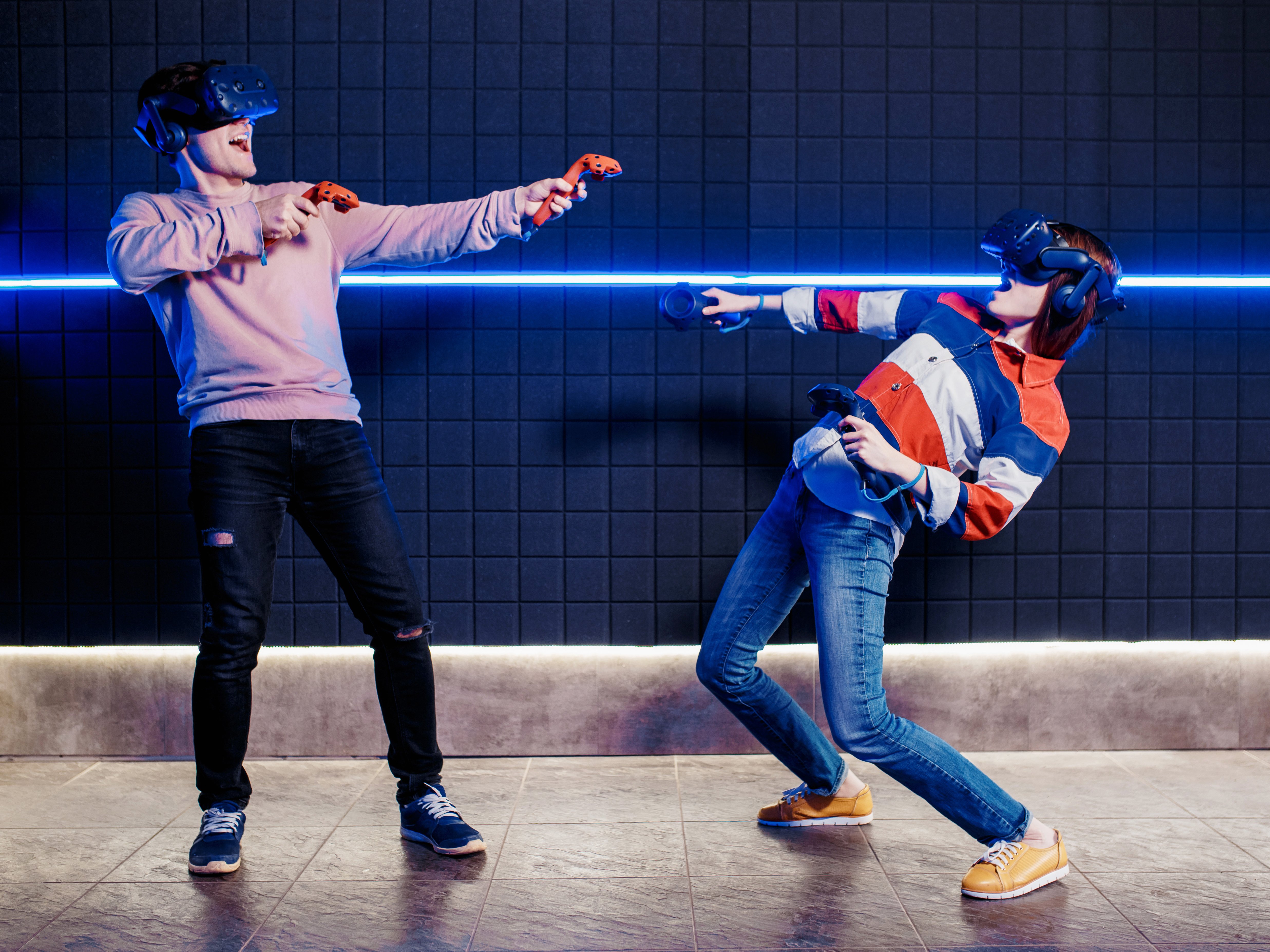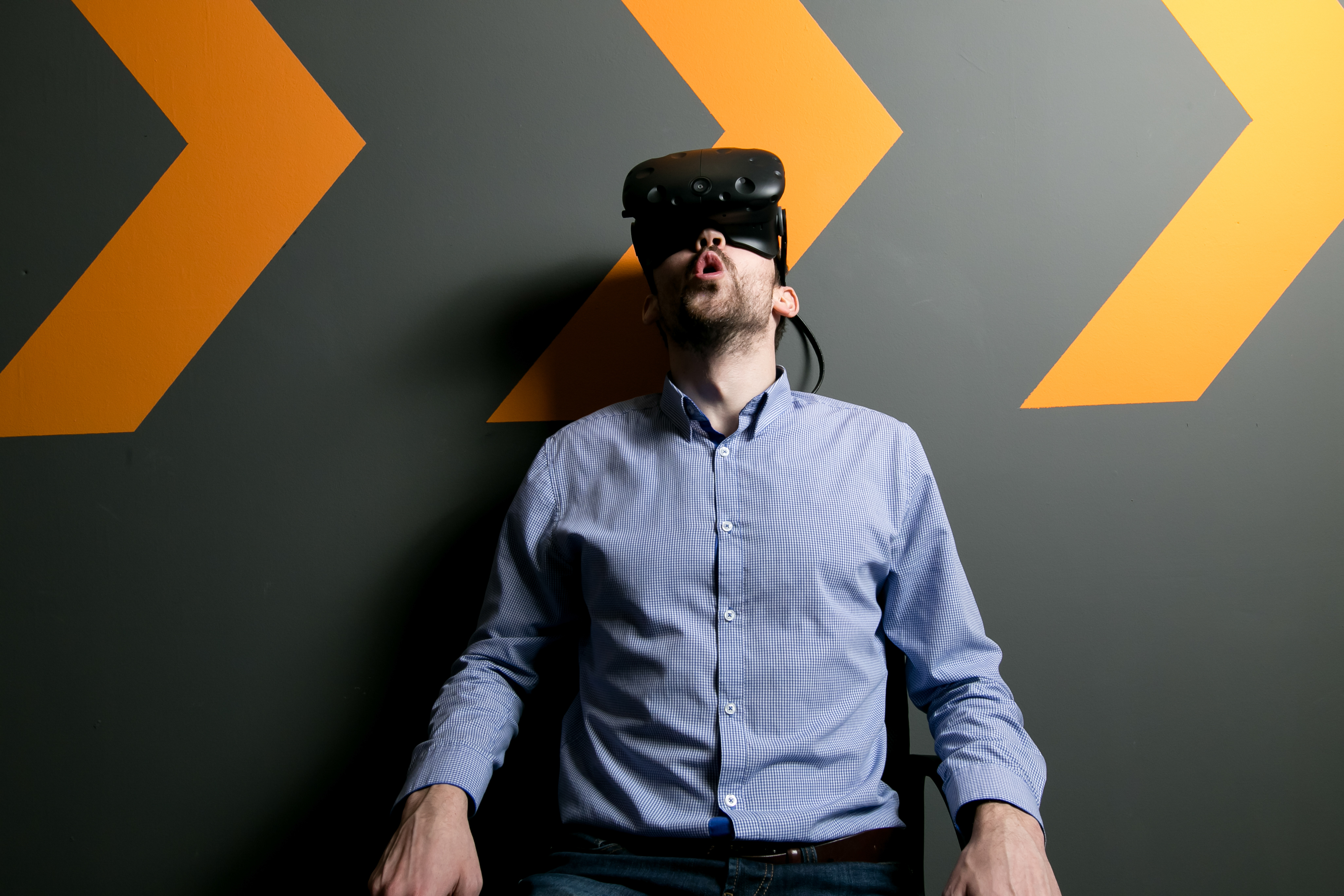Overcome the barriers to VR Escape Room Adoption
Posted on: 2022-01-21
It’s indisputable: ever since the very start, escape rooms have been an incredible hit across the world.
Solving puzzles, following a story — there's just something about the satisfaction of a good escape that gets customers excited. Given the growth in popularity and profitability of these businesses, we can be pretty certain of that.
That said, escape room business owners are watching the industry and market carefully. No one wants to miss out on the next big thing — and it's looking like that's going to be VR.
But if you want to build a profitable and sustainable VR business model before the market becomes saturated? You need to get a head start and adopt virtual reality escape room entertainment now.
What's Stopping You Adding VR To Your Business?
Despite how increasingly profitable virtual reality businesses have become over the last few years, many prospective or established escape room and family entertainment business owners say they find it difficult to hop on the virtual reality business wagon. Others, less willing to adapt to change at all, just won't hear of it and prefer to stick to what’s worked for them so far.
What’s stopping them? There are two critical barriers to adopting virtual reality in the escape room industry — limited knowledge of what these virtual 3D environments actually are, and fear of making the decision at the wrong time.
What Keeps Business Owners From Embracing Virtual Reality in their Businesses
Whether we’re talking about an established business or a new one, let’s look at these two factors.
Limited Knowledge of Virtual Reality
Simply put, some have no idea what virtual reality is or what it can do. Others may have come across a few 360 degree images and videos and assume that's all there is to virtual reality, so they don’t see the appeal in the context of what they can offer their customers.
Whichever group you're in, keep this in mind: there’s ultimately no substitute for an experience than the experience itself. The most critical thing you can do to understand the power of virtual reality is to try it for yourself.
For example, you can’t explain the full experience of the yummy taste of a mango to another person unless they’ve already tried one. You can show pictures, you can describe the taste in the most articulate manner possible — you could even show them one. Still, until that person takes a bite, they won't know. And as with anything, many people love trying something new, while others take a bit more convincing.
Similarly, you need that eureka moment for VR — this is a totally new experience for which you have no frame of reference!
A restaurant owner wouldn't put a dish on the menu they haven't tasted themselves — but they'd consider it part of their job to get out there and be personally familiar with the tastes their customers are interested in so they can make an informed decision. In the same way, as an entertainment business owner, if you're not personally familiar with VR? You should be.
The good news here is it’s never been easier to do that. Headsets are affordable if you want to try yourself, and there may be an establishment near you already running VR entertainment if you just want a taste.

Fear of the Decision
Technology is constantly evolving, and there will always be a newer and better version of a gadget, software or other device hitting the market. Maybe you're worried about investing in hardware now only to feel like you should've waited for the next release.
But you shouldn’t miss a good opportunity now just because you’re worried there may be a different one in the future. After all, without taking that good opportunity now, who’s to say there is a later? Missing out could be detrimental to the growth of your company and more harmful than you realize.
Removing fear from the decision-making equation is one of the most challenging things business owners and entrepreneurs must do as they lead their companies into the future. But it's necessary.
Establishments that don’t adapt to a rapidly changing business environment by bringing in newer forms of technology before it's too late can find themselves obsolete and irrelevant. When the competition does adapt, customers flock to them — and those companies that let that opportunity go get left behind.
There will always be a newer and better version of virtual reality hardware on the way. But VR has reached a point of maturation where amazing experiences truly are available at an affordable price point — both for home use and more sophisticated location-based entertainment use.
Virtual Reality Organizations Own the Future
So what do you actually do next? If one or both of these barriers have been holding you back, you may need to evaluate your approach to change. There's plenty of advice on this out there because as it happens, many business owners and entrepreneurs let personal unfamiliarity and fear of risk keep them from making the right decisions for their businesses.
It's the subject of a ton of business books. As an example, using characters Sniff, Scurry, Hem, and Haw, Spencer Johnson explains in his book "Who Moved My Cheese," how people adapt to change differently. Some act like Sniff, who detects change early, or Scurry, who scurries into action as soon as a change is detected. Some are more like Hem, who denies and resists change even if it kills them, or Haw who learns to adapt in time to change to achieve something better.
Whichever character describes your attitude to change, we all share something in common: a need to find a way to succeed in changing times.
When it comes to the experiential power of virtual reality as an entertainment medium and ensuring the financial stability and growth of your business, which will you be?


